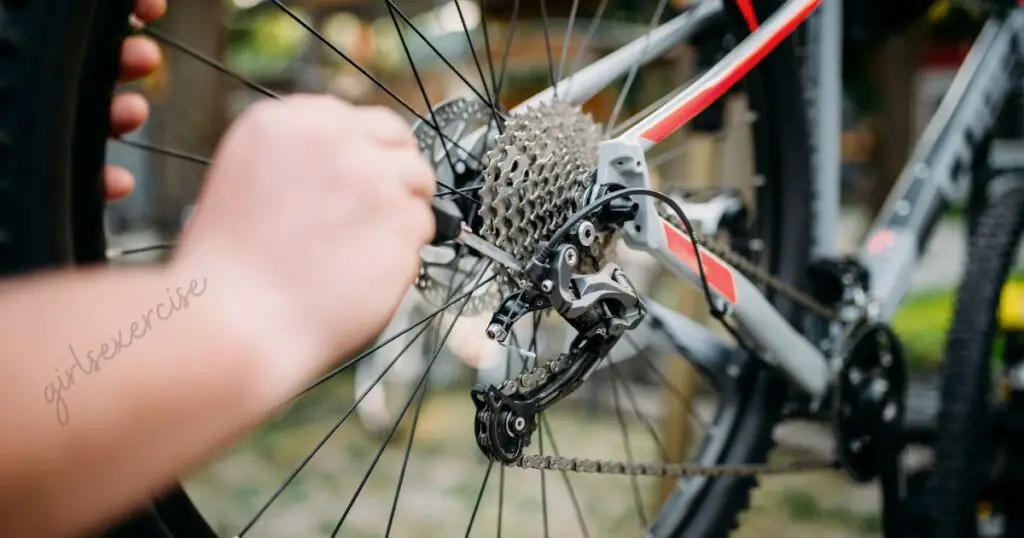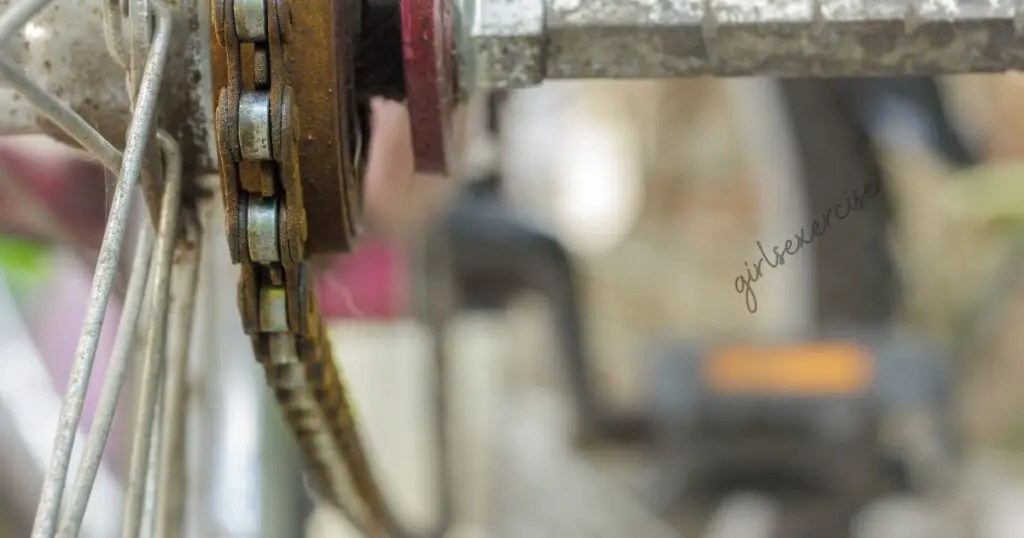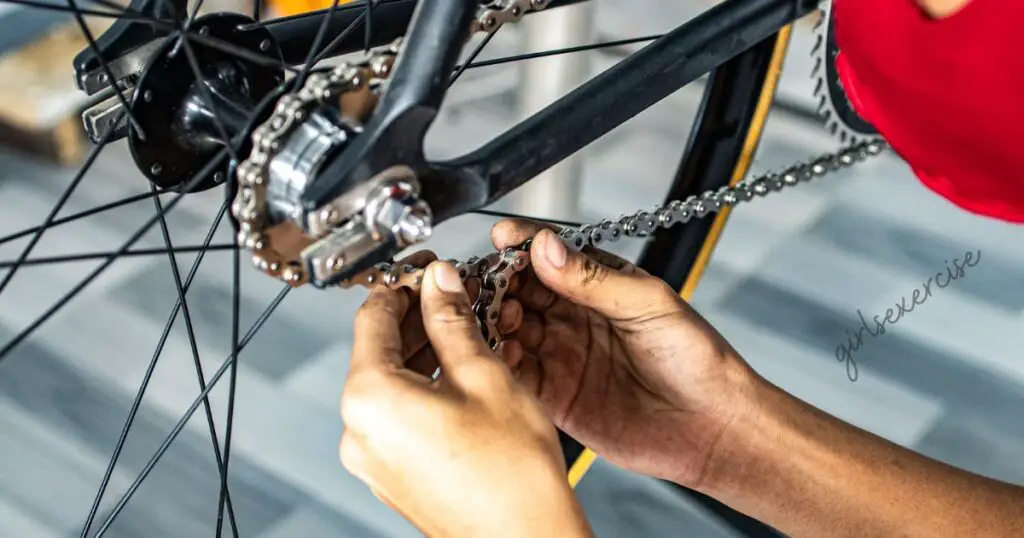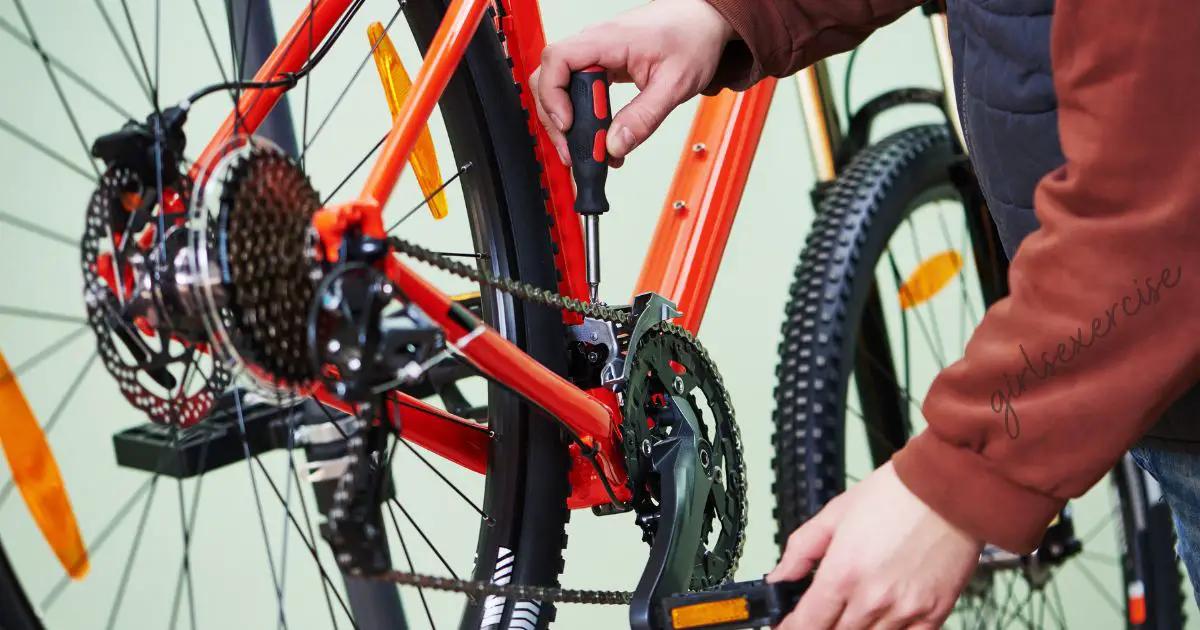For avid cyclists and casual riders alike, the nuisance of a rust-riddled bike chain is an all-too-familiar concern. The relentless battle against corrosion and the potential performance degradation of a bike’s chain has long been a point of frustration. The introduction of a bike chain that doesn’t rust heralds a significant breakthrough in the world of cycling.
A rust-resistant bike chain is meticulously engineered to combat the pervasive issue of rust accumulation, ensuring the longevity and optimal functionality of your bicycle.
In this exploration, we will take a closer look at the intricate features and advantages that these innovative chains offer, highlighting their pivotal role in safeguarding your bike against the detrimental effects of rust while contributing to a smoother, more efficient, and enjoyable riding experience.
Understanding the Importance of a Rust-Free Bike Chain

A bicycle chain is a seemingly simple yet critical component of a bike’s drivetrain. It is a vital link between the rider’s pedaling power and the motion of the bike. An often overlooked aspect of bike maintenance is keeping the chain rust-free. But why is this so important?
Smooth and Efficient Riding:
A rust-free bike chain is the key to a smooth and efficient ride. When a chain is rusty, it creates friction and resistance as it moves through the drivetrain components. This added resistance makes pedaling more challenging, saps your energy, and can make your ride less enjoyable.
Riding with a rusty chain can be compared to driving a car with underinflated tires. It’s not only inefficient but also detrimental to your overall cycling experience.
Chain Longevity:
A rust-free chain is essential for prolonging the life of your bike’s drivetrain components. When a chain rusts, it not only affects itself but also spreads the rust to other components like the cassette, chainrings, and derailleur pulleys.
Replacing these parts due to rust-related wear and tear can be costly. By maintaining a rust-free chain, you save money in the long run and ensure your bike components have a longer lifespan.
Reduced Maintenance:
Maintaining a rust-free chain is far easier and less time-consuming than dealing with a rusty one. Frequent maintenance tasks like cleaning and lubricating the chain become less frequent when rust is kept at bay. This translates to spending additional time on the road and reducing the amount of time spent in the workshop.
Types of Bike Chains and Their Susceptibility to Rust

Not all bike chains are created equal, and their susceptibility to rust depends on the materials used and the coatings applied. Let’s explore the common types of bike chains and how they fare in terms of rust resistance:
Steel Chains:
Steel chains are the most common and affordable type. While they are strong and durable, they are also more susceptible to rust, especially if not adequately maintained. Steel chains may be the most vulnerable to rust among the various types.
Stainless Steel Chains:
Stainless steel chains are an upgrade from traditional steel chains in terms of rust resistance. Stainless steel is an alloy that contains chromium, which provides corrosion resistance. These chains are less prone to rust and are ideal for riders in wet or coastal areas.
Nickel-Plated Chains:
Nickel-plated chains are steel chains with a nickel coating. This coating adds a protective layer that reduces the chain’s susceptibility to rust. They offer a good compromise between affordability and rust resistance.
Factors Leading to Chain Rust and How to Avoid Them
Understanding why chains rust and how to prevent it is crucial. Several factors contribute to chain rust, and knowing how to mitigate them can help maintain a rust-free chain.
Moisture and Water Exposure:
One of the primary culprits for chain rust is exposure to moisture. Whether it’s riding in the rain, splashing through puddles, or simply high humidity, water can quickly lead to rust formation.
How to Avoid:
Store Your Bike Indoors:
When not in use, keeping your bike indoors or in a dry environment can significantly reduce the chances of rust.
Use a Bike Cover:
If outdoor storage is unavoidable, consider using a bike cover to shield your bike from rain and moisture.
Salt and Sand:
If you ride in coastal or sandy areas, your chain is at higher risk of rust due to exposure to salt and abrasive sand particles.
How to Avoid:
Regular Cleaning:
After rides in such environments, it’s crucial to clean your bike thoroughly, paying special attention to the chain.
Protective Lubricant:
Apply a suitable chain lubricant that offers protection against moisture and corrosion.
Neglecting Maintenance:
Failing to maintain your bike chain, including regular cleaning and lubrication, is a surefire way to invite rust.
How to Avoid:
Routine Cleaning:
Clean your chain regularly with a bike-specific degreaser and a brush to remove dirt, grime, and old lubricant.
Lubrication:
Apply a good-quality bike chain oil to keep your chain well-lubricated, reducing friction and protecting it against rust.
Inspect for Wear:
Regularly inspect your chain for signs of wear and elongation. Substitute it as needed to avoid causing additional harm.
Storage Conditions:
The environment in which you store your bike can also influence chain rust. Storing your bike in a damp or humid location can lead to rust issues.
How to Avoid:
Indoor Storage:
Whenever possible, store your bike indoors in a cool, dry place.
Use a Bike Stand:
Elevating your bike on a stand can help prevent contact with moisture on the ground.
Maintenance and Care:
Key Steps to Ensure a Rust-Free Bike Chain
Preventive maintenance and care are essential to ensure a rust-free bike chain. Here are the essential actions to take:
Regular Cleaning:
Cleaning your bike chain is the foundation of rust prevention. Follow these steps:
a. Use a bike-specific degreaser to remove old lubricant and dirt.
b. Use a brush with stiff bristles to scrub the chain, getting into all the nooks and crannies.
c. Rinse the chain thoroughly with clean water.
d. Dry it using a clean cloth to prevent moisture-related rust.
Lubrication:
After cleaning, it’s vital to keep your chain well-lubricated. Here’s how to do it:
a. Use a bike chain oil or lube. Avoid using generic lubricants, as they may not offer the necessary protection.
b. Apply a small amount of lubricant to each chain link, ensuring even coverage.
c. Allow the lubricant to penetrate for a few minutes, and then wipe off any excess to prevent attracting dirt.
Regular Inspection:
Frequent chain inspection can help you catch issues early and prevent further damage. Look for:
a. Signs of rust or corrosion.
b. Chain wear and elongation. A chain checker tool can help you determine if it needs replacement.
c. Any tight links or stiff spots, which may require extra attention during cleaning and lubrication.
Prevent Over-Lubrication:
While lubrication is essential, too much of it can attract dirt and grime, leading to a gunky buildup on your chain.
a. Apply just enough lubricant for a thin, even coating.
b. Wipe off excess lubricant to prevent accumulation.
Top Picks: Rust-Resistant Bike Chains for Every Rider
Choosing the right bike chain is a crucial step in preventing rust. There are several options available, and the best one for you depends on your riding style, environment, and budget. Here are some top picks known for their rust resistance:
Shimano Dura-Ace/XTR CN-HG901-11:
Why It’s Great: Known for its exceptional durability and resistance to rust, this chain is a top choice for high-performance riders.
Ideal For: Road cyclists, mountain bikers, and anyone seeking a long-lasting, rust-resistant chain.
SRAM PC-991:
Why It’s Great: The SRAM PC-991 offers a balanced combination of performance and rust protection.
Ideal For: A wide range of riders, from recreational cyclists to enthusiasts.
KMC X11.93:
Why It’s Great: This chain is cost-effective and offers decent rust resistance, making it a solid choice for budget-conscious riders.
Ideal For: Riders looking for affordability without sacrificing basic rust protection.
Campagnolo Record 11-Speed Chain:
Why It’s Great: Campagnolo is renowned for its high-quality components, and the Record chain is no exception. It offers both performance and rust resistance.
Ideal For: Enthusiasts and professional cyclists who demand top-tier components.
Wipperman Connex 11SX:
Why It’s Great: The Connex 11SX is known for its robust construction and resistance to corrosion, making it suitable for all-weather riding.
Ideal For: Riders who frequently ride in wet or challenging conditions.
These chains have proven themselves in terms of rust resistance and overall performance. However, keep in mind that the effectiveness of a chain’s rust resistance also depends on how well it is maintained and the environmental conditions it’s exposed to.
Extending the Lifespan of Your Rust-Free Bike Chain

Apart from selecting the right chain and following basic maintenance steps, here are some expert tips to help extend the lifespan of your rust-free bike chain:
Avoid Excessive Cross-Chaining:
Cross-chaining occurs when you use extreme gear combinations, such as using the big chainring with the largest rear cog or the small chainring with the smallest rear cog. This puts added stress on the chain and can lead to accelerated wear.
Shift Gears Smoothly:
Practicing smooth and controlled gear shifting reduces the risk of chain stress. Avoid forcing the shift lever or putting excessive pressure on the pedals during gear changes.
Replace Worn Components Promptly:
When your chain shows signs of wear or elongation, it’s crucial to replace it promptly. A worn chain can accelerate the wear of other drivetrain components like the cassette and chainrings.
Use a Chain Wear Indicator:
Invest in a chain wear indicator tool. These tools help you assess the chain’s condition accurately and indicate when it’s time for replacement.
Maintain a Clean Drivetrain:
A clean chain is only as good as the rest of the drivetrain. Regularly clean and lubricate your cassette, chainrings, and derailleur pulleys to ensure a well-functioning system.
Environmental Impact: Choosing Sustainable Bike Chain Options

As cycling becomes more popular as a sustainable mode of transportation and recreation, it’s essential to consider the environmental impact of the components we use, including bike chains. Here’s how you can make more sustainable choices:
Choose Eco-Conscious Brands:
Many bike component manufacturers are actively working to reduce their environmental footprint. Look for brands that prioritize sustainability and use environmentally friendly materials and manufacturing processes.
Opt for Recyclable Materials:
Some bike chains are made from materials that are easier to recycle. Look for options that allow for responsible disposal and recycling at the end of their life cycle.
Recycle Your Old Chain:
When you replace an old bike chain, consider recycling it instead of throwing it in the trash. Some local bike shops and recycling centers may accept old chains for recycling.
By making sustainable choices in your bike components, you can contribute to reducing the environmental impact of your cycling activities.
Unraveling Misconceptions: Discerning Truth from Falsehood

Debunking Common Myths:
- We aim to address and dispel widely held misconceptions.
- Our goal is to provide you with accurate and reliable information.
Bike Chain Rust and Maintenance:
- The focus of our discussion is on the challenges related to bike chain rust and proper maintenance.
- We want to equip you with valuable insights to care for your bicycle chain effectively.
Misunderstandings in the Spotlight:
- We shed light on the prevailing misunderstandings that have become prevalent in this field.
- Our intent is to scrutinize these misconceptions and separate them from established truths.
Backed by Research and Evidence:
- We base our information on thorough research and solid evidence.
- Our commitment is to provide you with the most reliable and trustworthy knowledge available.
Empowering Informed Decision-Making:
- Our ultimate objective is to empower you to make informed decisions.
- By distinguishing fact from fiction, we help you navigate the world of bike chain maintenance with confidence.
Conclusion:
A rust-free bike chain is not a trivial matter but a fundamental aspect of enjoying your cycling experience to the fullest. It directly impacts your ride’s efficiency, the longevity of your bike’s components, and the ease of maintenance.
To maintain a rust-free chain, consider the type of chain you use, understand the factors leading to rust, and implement a regular maintenance routine.
Selecting a rust-resistant chain that matches your riding style and environment can significantly reduce the risk of rust. But even the best chain requires proper care, including regular cleaning and lubrication, and monitoring for wear.
Environmental responsibility also plays a role in your chain choice, with sustainability being an increasing concern in the cycling industry.
By choosing eco-conscious brands and materials, you can make a positive contribution to reducing the environmental impact of your cycling activities.
By dispelling common myths and misconceptions about bike chains and rust, you’ll be better equipped to make informed decisions and maintain a rust-free chain effectively.
Embrace the joy of riding with a smooth, efficient, and rust-free bike chain, and let your cycling adventures take you to new heights.
FAQs About Bike Chain That Doesn’t Rust
What is a rust-resistant bike chain?
A rust-resistant bike chain is a bicycle chain designed to resist corrosion and rust, typically made from materials or coated with substances that protect it from moisture and environmental factors that lead to rust.
Why is it important to have a rust-resistant bike chain?
It’s essential to have a rust-resistant bike chain because rust can lead to chain degradation, decreased performance, and increased maintenance costs. A rust-free chain ensures smoother shifting, prolongs the chain’s lifespan, and enhances your biking experience.
What materials are commonly used in rust-resistant bike chains?
Rust-resistant bike chains are often made from stainless steel, nickel-plated steel, or treated with anti-corrosion coatings like zinc or nickel. These materials provide a protective barrier against moisture and prevent rust formation.
How can I maintain a rust-resistant bike chain?
To maintain a rust-resistant bike chain, regularly clean and lubricate it. Clean off any dirt or grime with a brush and mild degreaser, and then apply a quality bicycle chain lubricant to keep it running smoothly and rust-free.
Can I use a rust-resistant bike chain in wet or rainy conditions?
Yes, rust-resistant bike chains are suitable for wet and rainy conditions. While they can withstand moisture better than regular chains, it’s still essential to maintain proper chain care to ensure longevity and optimal performance.




1 thought on “Bike Chain That Doesn’t Rust”